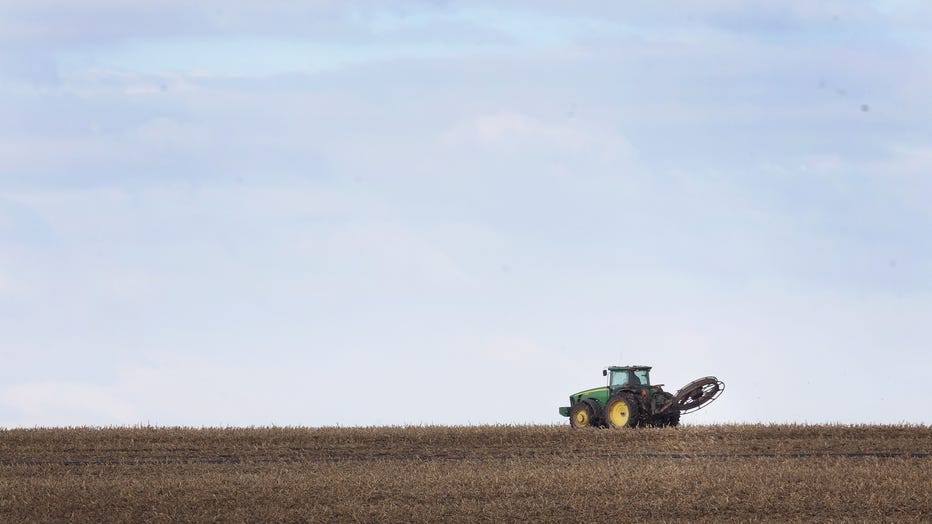Solar storm disrupts GPS signals critical for farmers

Rare G5 geomagnetic storm triggers Northern Lights in US
An 'extreme' G5-level solar storm is happening for the first time since 2003, triggering Northern Lights in some Southern states as far as Alabama and Georgia. The Space Weather Prediction Center issued its first "severe" Geomagnetic Storm Watch since January 2005 and said the event was the most powerful since the Halloween event of 2003. LiveNOW's Austin Westfall spoke about the celestial phenomenon with SWPC Coordinator Shawn Dahl.
A powerful solar storm brought spectacular Northern Light displays to much of the U.S. Friday night, with vibrant colors witnessed as far south as Florida.
And with the historic storm came the threat of power grid and communications disruptions. No major outages were reported, but the work of farmers across the country appears to have been significantly affected.
That’s because many rely on GPS for automated guidance when planting, and this time of year is vital for certain crops to get in the ground.
"All the tractors are sitting at the ends of the field right now shut down because of the solar storm," Kevin Kenney, a farmer in Nebraska, told 404media. "No GPS. We’re right in the middle of corn planting. I’ll bet the commodity markets spike Monday."
"It showed the tractor going in circles and auto steer didn’t work, and you couldn’t engage it," another farmer, Dennis Wolff in South Dakota, told KFYR TV.

FILE - A farmer drives a tractor across a field on October 31, 2023 near Cresco, Iowa. (Photo by Scott Olson/Getty Images)
LandMark Implement, a leading John Deere dealer in Nebraska and Kansas, was updating its customers all weekend of GPS issues, beginning Friday when the storm was at an "extreme" G5 level.
Specifically affected was the RTK GPS, or Real-Time Kinematic Global Positioning Systems. RTK is a highly advanced positioning technique that can provide hyper accuracy down to the centimeter when helping farmers drop seeds. This allows for straight lines and proper spacing.
Landmark said several types of its equipment lost accuracy on Friday and Saturday, which may affect accuracy in the future when it comes time to spray, cultivate and harvest any rows that were planted during the storm.
"To be clear, this isn’t a problem with our RTK network," Landmark said. "The storm has affected all brands of GPS, not solely John Deere."
RELATED: Northern Lights possible Sunday during another 'severe and extreme' geomagnetic storm
Delayed or inaccurate field work isn’t just an inconvenience. It could lead to a serious loss in harvest and profits. Farm Journal reports this solar storm will be useful for figuring out how a disruption in technology like this could impact the farming industry in the future.
Landmark said they’re working on being able to better predict solar activity, too.
"We do believe this (is a) historic event and it isn’t something that we are going to have to continue to battle frequently," it said.
RELATED: How to record the Northern Lights above US skies in real-time
2024 solar storm
The National Oceanic and Atmospheric Administration agrees, and said this solar storm was an "unusual event."
Geomagnetic storm activity reached the highest warning level possible Friday night, Level 5. The last event to reach that level was in October 2003.
The sun has produced strong solar flares since Wednesday, resulting in at least seven outbursts of plasma. Each eruption, known as a coronal mass ejection (CME), can contain billions of tons of plasma and magnetic field from the sun’s outer atmosphere, or corona.
The flares seem to be associated with a sunspot that is 16 times the diameter of Earth, NOAA said. It is all part of the solar activity ramping up as the sun approaches the peak of its 11-year cycle.
Such electromagnetic activity will only increase as the sun continues to reach the height of this cycle, which NASA said is expected to be in 2025.
This story was reported from Detroit. The Associated Press contributed.

